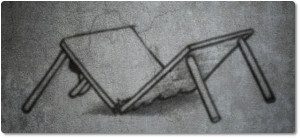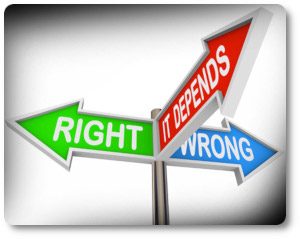This story starts in 2004. In the residential youth care organisation where I work, there are regular conflicts between young people or between young people and their cares. These are routinely responded to by all sorts of systems and methods: punishment and reward, insight and acknowledgement enhancing conversations, … and sometimes humor can do miracles, as well. Occasionally, serious conflicts and very deviant behavior need to be dealt with. The concept of ‘a need for reparation’ then quickly becomes emotionally charged and often gets mixed up with a notion of justice on the one hand and a form of penance on the other, though this may only be apparent implicitly. This is also the case with Sheela, a 15-year-old girl who is in care with us due to serious family and behavioral difficulties. In the inpatient CAMHS where she previously spent several months for observation, she was diagnosed with attention and attachment difficulties. We have been working with her and her family for six months. It has been a bumpy road.
At a certain moment, a colleague speaks to Sheela about her behavior. She has again refused to make any effort at school, she is often very offensive in daily interaction, does not keep agreements and has lit a cigarette in one of the meeting rooms in the building. She scores poorly on the reward system currently used in the group, with the result that she can not participate in a pleasant activity the following Wednesday afternoon. When she hears this, Sheela becomes visibly angry and looks closely in the direction of another carer who is on the other side of the living room. She shouts out that these rules are ridiculous, and that she will attend to this activity, “whether we like it or not”. The carer shrugs and says “unfortunately, no”.
At this moment, Sheela marches right towards her, visibly very angry and agitated. Her hand forms a fist. With large eyes, the carer watches how this girl approaches her. By the time she has crossed the room, another carer (a big man who has watched this scene  unfold for a while) positions himself in between them. He straightens his head and raises his arms sideways. Sheela probably realizes that things will be different. About half a meter before she reaches the carer, she suddenly turns around and kicks our coffee table right through the middle of the room. Then she lets out a scream and walks to the garden where she lights up a cigarette.
unfold for a while) positions himself in between them. He straightens his head and raises his arms sideways. Sheela probably realizes that things will be different. About half a meter before she reaches the carer, she suddenly turns around and kicks our coffee table right through the middle of the room. Then she lets out a scream and walks to the garden where she lights up a cigarette.
In the aftermath of this conflict, understandably, reparation is expected. The table is broken, there has been unacceptable behavior, colleagues are very affected by it all. What has happened cannot be without moral and correctional consequences. This girl must bear the consequences of her behavior and learn from them, the damage and harm must be repaired, the group must be safe for the other young people, the workplace must be safe for the carers who work there.
Various attempts are made to achieve this. It is however far from certain that it will happen, and the entire investment in reparation leaves a bitter aftertaste. The carers feel that this girl has not really realized how wrong her behaviour was. She has refused to discuss this with the service and her parents, there has never been an apology, the cost of the table has been covered by the organization. A few months after this conflict, a lot of things have become more difficult in the life of the girl; the juvenile court rules she must be moved to a different service with a higher ratio of carer to child staffing.
The doorbell
Time passes, and many other young people come through the residential service. Sometimes, Sheela is talked about, mostly in the context of “what a fury she could be”. But over time, her presence disappears from our minds.
A little more than two years after her departure, I hear the doorbell. I am ‘on duty’ that day, so I go and answer. On the porch is Sheela, who says hello and asks if she can come in. I remember the first thought that her question triggers: “Am I alone in here?” Indeed, a reaction that tells quite a bit about the image of her I have been carrying in my mind.
Sheela enters the living room. I ask her if she wants something to drink. Sheela says: “No, I did not come over for that.” She tells me that she is going to school part-time now, and that she is in training to work in sales. She works in a clothing shop for sports equipment. She looks really healthy.
“So yes ….” And as she says that, she takes a white envelope from her back pocket. She stretches her arm and hands me the envelope. “I’ve saved this. I do not want to be remembered as the girl who broke your coffee table.”
I open the envelope and see that there is € 150 inside of it. “I looked up what a table like that costs at IKEA,” says Sheela. “I think this will cover it”. I tell her that I do not know what to say. “You can put that money away now. I do not want it back. ”
Sheela only stays for another five minutes, wandering about a bit. She asks whether one of the young people who used to be here when she was in our care, and with whom she used to ‘hang’, stayed for a long time? A little later she says that she has to go, that I must say hi for her to the other carers, and she leaves. I put the envelope on top of a desk and look at it.
Relational ethics
Professionals who are inspired by New Authority and Non Violent Resistance are often keen to promote reparation for violent behavior. At the same time, I notice that there is a lot of ambiguity and lack of clarity around the purpose of this focus. Is it intended for adults to teach children the difference between appropriate and unacceptable behavior? Is it the responsibility of adults to expect reparation? Is it the responsibility of the child to recognize the harm that has been done? Should adults be taught to deal with conflict in a more quiet or sophisticated way?
In itself, a focus on reparation is of course not new. If something has happened that was ‘wrong’ and has caused harm, then the idea that someone ‘has to make amends’ is as old as humanity. But what must be made ‘right’ exactly? What does ‘making up’ for harmful behaviour look like? And for what purpose should the young person make up for what they have done?
Back then, I guess we invested quite intensively in a ‘judicial’ understanding of reparation. Thanks to Sheela’s visit two years later, I learned that there was also an interpersonal focus that we had barely bothered to consider: how does interpersonal violence influence the ways in which people describe their relationships? What memories do we collect about the relationships in which violence takes place? How does violence affect how we look at ourselves and the other? And by extension, now that this violence has taken place, how do we want to shape the relationship and our experience of ourselves and the other?
 This learning experience has helped me shape an interpersonal ethic that I carry in my mind when I talk about this subject in my clinical practice or when I train other professionals. When I look at reparation from this perspective, there are many rich ways in which reparation can be done and experienced. It should not be seen solely in terms of guilt and innocence, punishment and penance. Reparation is also about finding some breathing space, about being able to see a future, about the opportunity to give meaning to the harm that can happen between people, about being allowed to reposition yourself towards the relational friction and reconnect after these ruptures.
This learning experience has helped me shape an interpersonal ethic that I carry in my mind when I talk about this subject in my clinical practice or when I train other professionals. When I look at reparation from this perspective, there are many rich ways in which reparation can be done and experienced. It should not be seen solely in terms of guilt and innocence, punishment and penance. Reparation is also about finding some breathing space, about being able to see a future, about the opportunity to give meaning to the harm that can happen between people, about being allowed to reposition yourself towards the relational friction and reconnect after these ruptures.
Professionals in youthcare or in the healthcare sector, like some parents, tell stories about children who find it very difficult to conduct this dialogue directly, who seem to have a ‘talent’ for shooting themselves in the foot, who are very suspicious of the adults who care for them and seem to refuse to show any remorse in case of violent episodes.
I think it is here that relational ethics around reparation and the methods of Non Violent Resistance come together, because these adults sometimes have to try to hold on to the idea that relational reparation also matters for these children themselves, even if they can not (yet) cooperate in realizing it.
Consequently, the unilateral efforts parents and professionals make when they strengthen boundaries or communicate an expectation that the young person should make reparation are not only about resisting the violence as such, but also about resisting and diminishing the negative relational effects of this violence on the experience of shared daily life, and on everybody’s future psychological and social well being.
“I do not want to be remembered as the girl who broke your coffee table.”
If you are trying to engage in durable relationships with children that present very difficult behavior, then the unilateral framework of Non Violent Resistance might offer you some ways of ‘hanging in there’, even or especially in times of hardship and low reciprocity.
Of course, just callling your unilateral actions ‘NVR’ don’t necessarily make them nonviolent. In fact, using methods drawn from NVR in an unconsidered way could be quite violent, especially if we lost awareness of the ethical stance Non Violent Resistance aims to represent. To be ethical means to ask ourselves: in the context of this violence, are we acting in pursuit of more mutual relational peace? How does our action impact on all those involved? These are not questions to be answered and then put on a shelf, but questions to help guide our thinking throughout our journey.
Willem Beckers
Systemic Psychotherapist

